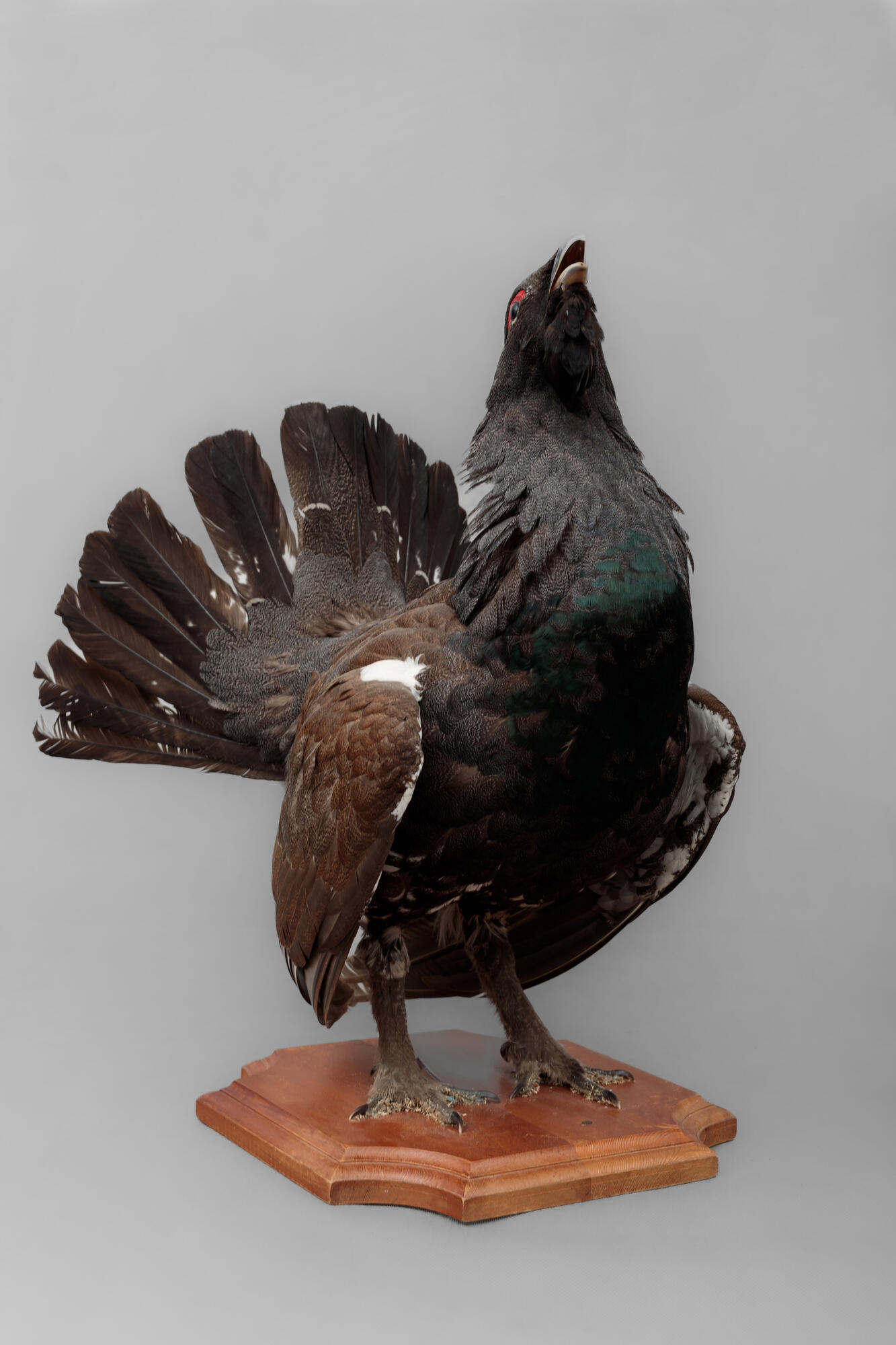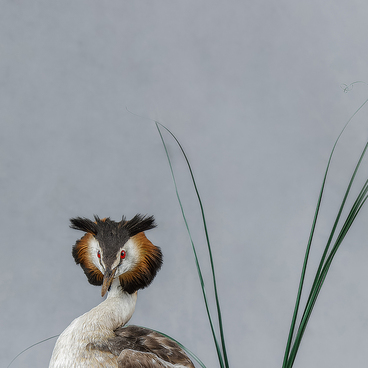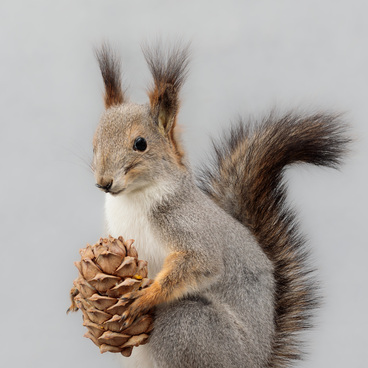The Uray City Historical Museum presents a capercaillie taxidermy mount. This is a large bird from the order Galliformes, in the family Phasianidae. Capercaillie are black and white, with red marks above the eyebrows. The taxidermist positioned the bird so that its head was raised and stretched up. The beak is open, and the wings are tightly pressed to the body.
The Russian word ащк capercaillie — “glukhar” — is based on the word “glukhoy”, which means “deaf”. This is a well-known feature. During the mating season, the male is less likely to notice peripheral tasks and this is often used by hunters. Capercaillie is the largest member of the grouse family. It is distinguished from other representatives by a rounded tail and elongated feathers on the neck.
Capercaillie live in coniferous, deciduous, and mixed forests of Eurasia. Males can reach 110 cm in length, their wingspan is 1.4 meters, and their weight is from 4.1 to 6.5 kg. Capercaillie females are noticeably smaller and on average weigh about 2 kg.
The head and neck of the male are blackish, the back of the neck is ash-gray with black spots, the front is black with gray. The back is blackish with brown and gray spots. The goiter is black with a green metallic sheen, the chest is a greenish-steel color, and its lower side is covered with black and white spots. Wings are brown. The tail is black with white spots. The bare skin near the eye is bright red, and the beak is white-pink. The taxidermist managed to preserve all these colors.
Capercaillie is at home in forests with moss covered ground and swamp with abundant berries. Generally, these are sedentary birds that sometimes migrate from the mountains to the valleys and back. Sometimes they are known for seasonal migration. The heavy birds fly with loud wing noise, which results from their flapping wings.
Capercaillie normally do not fly far. The bird usually spends the morning and afternoon on the ground, and the night in the trees. Capercaillie is very cautious: in a normal situation it has excellent hearing and vision.
In spring and summer, capercaillie live on shoots, flowers, tree buds, leaves, grass, wild berries, seeds, and insects. In autumn, they feed on larch needles, in winter — on pine and spruce needles. Chicks eat insects and spiders.
During the mating season in spring, these birds are involved in courtship rituals, known as lekking, with males displaying for the females on the ground and in trees. Before that, they stay alone for a long time, but from March to May, they gather in the familiar parts of the forest. Each year, they choose the same places for lekking. In the early morning, the males begin to make peculiar sounds similar to crackling.
The Russian word ащк capercaillie — “glukhar” — is based on the word “glukhoy”, which means “deaf”. This is a well-known feature. During the mating season, the male is less likely to notice peripheral tasks and this is often used by hunters. Capercaillie is the largest member of the grouse family. It is distinguished from other representatives by a rounded tail and elongated feathers on the neck.
Capercaillie live in coniferous, deciduous, and mixed forests of Eurasia. Males can reach 110 cm in length, their wingspan is 1.4 meters, and their weight is from 4.1 to 6.5 kg. Capercaillie females are noticeably smaller and on average weigh about 2 kg.
The head and neck of the male are blackish, the back of the neck is ash-gray with black spots, the front is black with gray. The back is blackish with brown and gray spots. The goiter is black with a green metallic sheen, the chest is a greenish-steel color, and its lower side is covered with black and white spots. Wings are brown. The tail is black with white spots. The bare skin near the eye is bright red, and the beak is white-pink. The taxidermist managed to preserve all these colors.
Capercaillie is at home in forests with moss covered ground and swamp with abundant berries. Generally, these are sedentary birds that sometimes migrate from the mountains to the valleys and back. Sometimes they are known for seasonal migration. The heavy birds fly with loud wing noise, which results from their flapping wings.
Capercaillie normally do not fly far. The bird usually spends the morning and afternoon on the ground, and the night in the trees. Capercaillie is very cautious: in a normal situation it has excellent hearing and vision.
In spring and summer, capercaillie live on shoots, flowers, tree buds, leaves, grass, wild berries, seeds, and insects. In autumn, they feed on larch needles, in winter — on pine and spruce needles. Chicks eat insects and spiders.
During the mating season in spring, these birds are involved in courtship rituals, known as lekking, with males displaying for the females on the ground and in trees. Before that, they stay alone for a long time, but from March to May, they gather in the familiar parts of the forest. Each year, they choose the same places for lekking. In the early morning, the males begin to make peculiar sounds similar to crackling.







